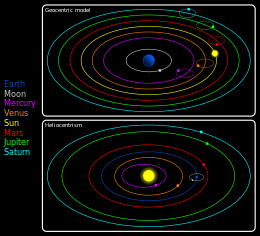What Did Kepler Do?
Johannes Kepler was a German astronomer and mathematician who lived in the late 16th and early 17th centuries. He is best known for his laws of planetary motion, which were later used by Isaac Newton to develop his famous law of universal gravitation. Kepler’s laws helped to lay the foundations for modern astronomy and physics, and his contributions to the fields of optics, astronomy, and mathematics are still highly regarded today. In addition to his revolutionary scientific work, Kepler wrote several influential books on philosophy and theology, and he was a key figure in the development of the scientific revolution.
Background of Johannes Kepler
Johannes Kepler was a German astronomer and mathematician of the late 16th and early 17th centuries. He was born in the city of Weil der Stadt, Germany in 1571 and is best known for his laws of planetary motion. His works allowed for the development of modern astronomy and have been influential for centuries.
Kepler is credited with discovering the three laws of planetary motion. These laws, which are still fundamental to our understanding of the solar system, state that planets move in elliptical orbits around the Sun, that a planet’s orbital speed is fastest when it is closest to the Sun, and that the ratio of a planet’s orbital period to its size is constant. He also wrote about conic sections, optics, and the theory of tides.
Throughout his life, Kepler wrote extensively about his beliefs, including his belief in astrology and his commitment to the Copernican model of the solar system. He was also an advocate for the use of mathematics in astronomy, which was an unpopular view at the time. His works, including the Astronomia nova, Epitome Astronomiae Copernicanae, and Harmonice Mundi, have been influential in the development of modern science.
Kepler’s Astronomical Discoveries
Johannes Kepler was an influential astronomer and mathematician who made major contributions to the field of science. He is best known for his discoveries related to the laws of planetary motion, which greatly advanced the understanding of the universe and its workings. Kepler also made significant contributions to optics, the theory of motion, and the concept of causality. His work helped to revolutionize the way that science was studied and taught, and he is still regarded as one of the greatest scientists of all time.
Kepler’s most famous discovery was the three laws of planetary motion, which mathematically described the motion of planets around the Sun. These laws, which are now known as Kepler’s laws, revolutionized the way that astronomers viewed the universe. They also provided a foundation for Newton’s law of universal gravitation, which further developed our understanding of the physical properties of the universe.
In addition to his work on planetary motion, Kepler made important contributions to the fields of optics and the theory of motion. He was the first to correctly explain the formation of both lunar and solar eclipses, and he also developed the concept of “straight line motion” which was used to explain the motion of objects in the absence of a force. He also studied the behavior of light and the refraction of light passing through different materials, and his work helped to establish the modern field of optics.
Kepler’s discoveries played a critical role in the advancement of science. His work provided an understanding of the physical universe and provided the foundation for further exploration. His laws of planetary motion and contributions to optics and the theory of motion are still studied and utilized today, and he is remembered as one of the most influential scientists of all time.
Kepler’s Three Laws of Planetary Motion
revolutionized our understanding of the solar system. Johannes Kepler, a German astronomer and mathematician, developed these laws in the early 17th century. The three laws state: planets move in elliptical orbits around the sun; the line connecting a planet to the sun sweeps out equal areas in equal times; and the square of a planet’s orbital period is proportional to the cube of its average distance from the sun.
Kepler’s work shed light on the mechanics of how the solar system works. He was able to explain why the planets move in the way they do, and he was able to calculate the sizes of planetary orbits and the amount of time it takes them to complete a year. His research also allowed for the formulation of the laws of gravity, which would later be developed by Isaac Newton. Kepler’s work was instrumental in helping to understand and explain the motion of the planets and the stars.
The importance of Kepler’s work cannot be underestimated. His laws of planetary motion have served as the foundation for modern astronomical research, and are still used today in calculating trajectories and orbits. Kepler’s laws have also been used to develop theories about the formation of the solar system and the possibility of other planetary systems. In addition, Kepler’s work has helped to explain the evolution of stars and the structure of galaxies.
Kepler’s laws are undoubtedly one of the most important contributions to the field of astronomy, and are a testament to the power of scientific inquiry and discovery. Without Kepler’s work, our understanding of the universe would be significantly different. Today, Kepler’s research continues to provide insight into the workings of the cosmos and serves as a reminder of the importance of scientific exploration.

Kepler’s Contributions to Mathematics
Johannes Kepler is one of the most influential mathematicians of all time. He developed theories and laws that influenced the fields of astronomy, optics, and mathematics. His most famous contributions include his three laws of planetary motion, his work on the calculation of the orbits of planets, and his development of the Keplerian telescope. Kepler’s work revolutionized science and laid the foundation for the development of modern physics. His ideas were a major breakthrough in the scientific understanding of the universe and its workings.
Kepler’s three laws of planetary motion are fundamental to the understanding of astronomy and astrophysics. The first law states that planets move in elliptical paths around the sun, with the sun at one of the two focal points. The second law states that a planet’s speed varies as it moves around the sun, with the planet moving faster when it is closer to the sun and slower when it is further away. The third law states that a planet’s orbital period is related to its distance from the sun. These laws, combined with other mathematical calculations, allowed Kepler to make highly accurate predictions about the movements of planets.
Kepler’s development of the Keplerian telescope was also a critical contribution to the field of astronomy. This telescope was the first of its kind and allowed for the observation of distant stars, galaxies, and other celestial bodies. Kepler was a true pioneer in the field of astronomy, and his work has allowed us to understand the universe in a much deeper way.
Kepler’s contributions to mathematics are undeniable. He revolutionized the scientific understanding of the universe and the laws that govern it. His laws of planetary motion and his development of the Keplerian telescope laid the foundation for modern astronomy and physics. His work continues to influence the field of astronomy to this day.
Kepler’s Work in Optics
and Astronomy
Johannes Kepler is widely regarded as one of the most influential scientists of all time. He made groundbreaking discoveries in the fields of optics and astronomy, which are still studied today. In optics, Kepler developed the telescope and made improvements to the design of the camera obscura. He also used the camera obscura to prove that the retina of the eye is sensitive to light. In astronomy, Kepler discovered three laws of planetary motion which are now known as Kepler’s laws. He used these laws to explain the motion of the planets around the sun. He also discovered that the orbits of the planets are elliptical rather than circular. Kepler’s model of the solar system was one of the first to be supported by empirical evidence and is still used today. His discoveries remain an inspiration to scientists and astronomers, and his contribution to science is still being felt hundreds of years later.
Legacy of Johannes Kepler
Johannes Kepler is widely regarded as one of the most influential figures in the history of science. He was a German astronomer, mathematician, and astrologer who made a number of major contributions to the fields of mathematics, astronomy, and astrology. He is credited with the development of the three laws of planetary motion, which laid the foundation for modern astronomy and astrophysics. He is also credited with the discovery of the elliptical orbits of planets, which was a major breakthrough in astronomy. In addition, he made significant contributions to the field of optics, including the development of the telescope. His works on astronomy and astrology also had a major impact on the development of modern science. His legacy is still felt in the astronomical and scientific communities today. Kepler’s work was a major milestone in the development of modern science, and he is remembered for his contributions to the fields of mathematics, astronomy, and astrology.
FAQs About the What Did Kepler Do?
1. What did Johannes Kepler discover?
A: Johannes Kepler was a German astronomer and mathematician who discovered three laws of planetary motion. He also developed the first modern telescope and made important contributions to optics.
2. What is Kepler’s third law of planetary motion?
A: Kepler’s third law of planetary motion states that the square of the orbital period of a planet is proportional to the cube of the semi-major axis of its orbit.
3. What did Kepler’s laws of planetary motion contribute to astronomy?
A: Kepler’s laws of planetary motion provided a powerful way to predict the future positions of planets in the solar system. They also helped to establish the heliocentric model of the solar system, which places the Sun at the center and the planets orbiting around it.
Conclusion
Johannes Kepler was a seminal figure in the history of astronomy. He made several groundbreaking discoveries, including the three laws of planetary motion. His work laid the groundwork for Isaac Newton’s law of universal gravitation. He also made significant contributions to optics, mathematics, and astrology. Kepler’s work helped to revolutionize the understanding of the physical universe, and it continues to influence astronomy and science today.






